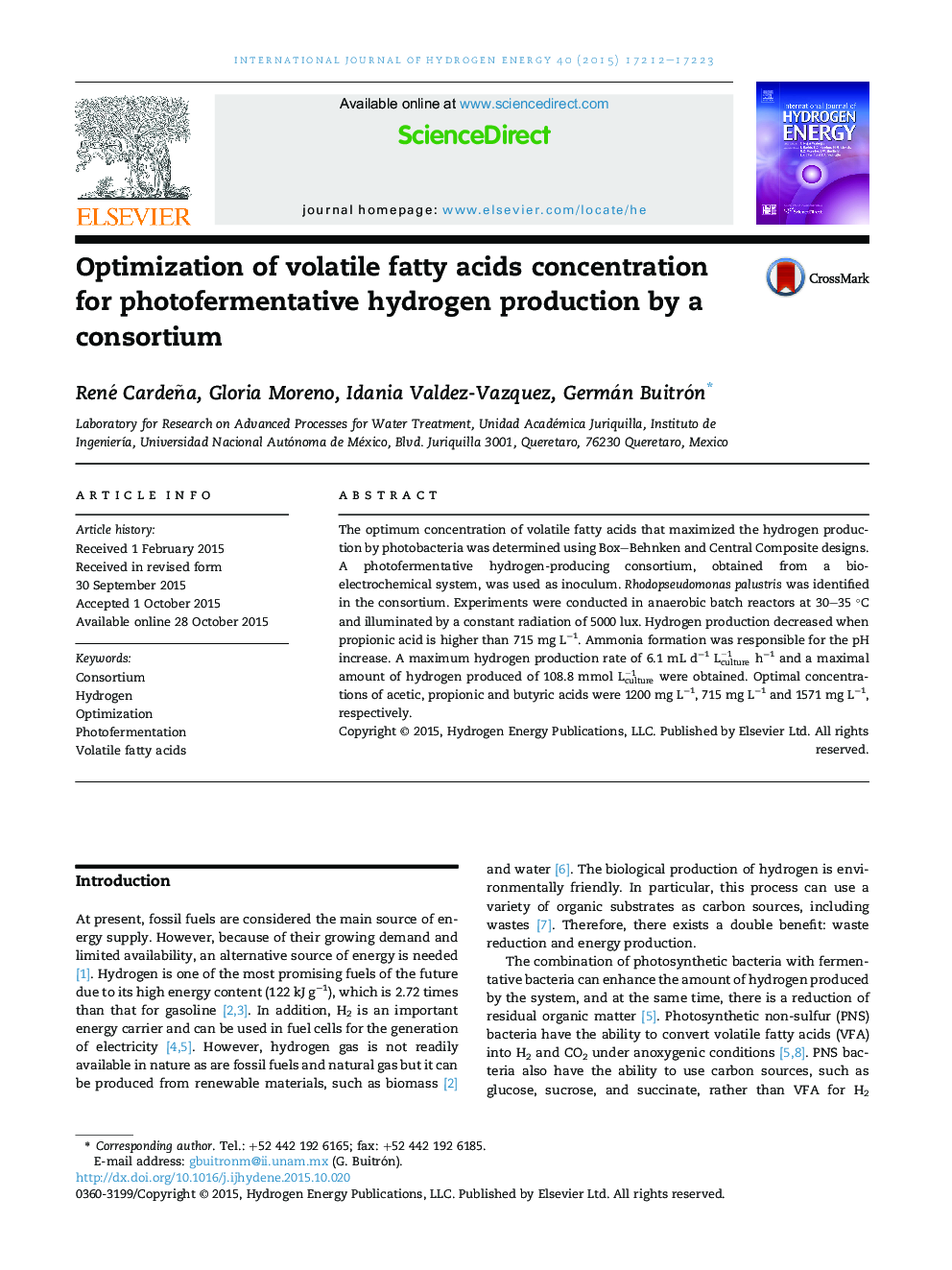| Article ID | Journal | Published Year | Pages | File Type |
|---|---|---|---|---|
| 1269008 | International Journal of Hydrogen Energy | 2015 | 12 Pages |
•A photofermentative hydrogen-producing consortium was evaluated using VFA.•Predominant bacteria in the consortium was Rhodopseudomonas palustris.•Propionic acid and the increase of pH decrease the hydrogen production.•The maximum hydrogen production rate was 6.1 mL h−1 L−1.•The maximum amount of hydrogen produced was 108.8 mmol L−1.
The optimum concentration of volatile fatty acids that maximized the hydrogen production by photobacteria was determined using Box–Behnken and Central Composite designs. A photofermentative hydrogen-producing consortium, obtained from a bio-electrochemical system, was used as inoculum. Rhodopseudomonas palustris was identified in the consortium. Experiments were conducted in anaerobic batch reactors at 30–35 °C and illuminated by a constant radiation of 5000 lux. Hydrogen production decreased when propionic acid is higher than 715 mg L−1. Ammonia formation was responsible for the pH increase. A maximum hydrogen production rate of 6.1 mL d−1 Lculture−1 h−1 and a maximal amount of hydrogen produced of 108.8 mmol Lculture−1 were obtained. Optimal concentrations of acetic, propionic and butyric acids were 1200 mg L−1, 715 mg L−1 and 1571 mg L−1, respectively.
